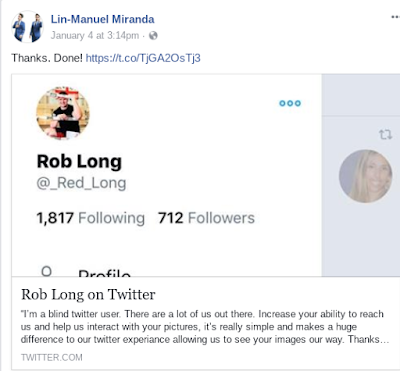4 Rules for Accessible Images That Will Get You More Views
Innovative educators understand that when posts have images they receive more views and provide a better experience for the reader. What they may not realize is that is only the beginning. You also should describe your images. There are two primary reasons for that.
1) Search Image Optimization (SEO)
2) Accessible to those who can't see images because they are visually impaired or because of bandwidth issues.
Here is how to do that on Twitter and blogs.
1) Alt text tags
Describe your image with short, concise, descriptive language like Hamilton's Lin-Manuel Miranda is doing now that Rob Long told him he should.
 |
| Visit Rob's Tweet to learn how to add alt text |
2) Title Text
Your title text is what shows when someone hovers over an image. This means you may want it to have a call to action. For example, you might say to click the image to learn more about the topic. Here's what that looks like on blogger.

3) Caption
The caption is the slightly more thorough description of your image for all readers. Another advantage is that captions are more likely to be read then your post. It also provides more context for search engines to understand what you are sharing. You can also use the caption to link to other important information.
 |
| Lisa with her friend Brandi and their dogs in Delray Beach. Lisa's mini schnauzer, Otto has his own Facebook page. |
4) Image Name
When you save an image, it receives an ugly, nonsensical name as you can see in the image below.
Give your image a sensible names with a few words to describe it. Think of it like a file you are uploading.
That's it. Follow these four rules and it is a win win. You'll receive more eyes on your post not only because the SEO is increased, but also because those who can't see adequately with their eyes will now have access to what you shared via a screen reader.







No comments: